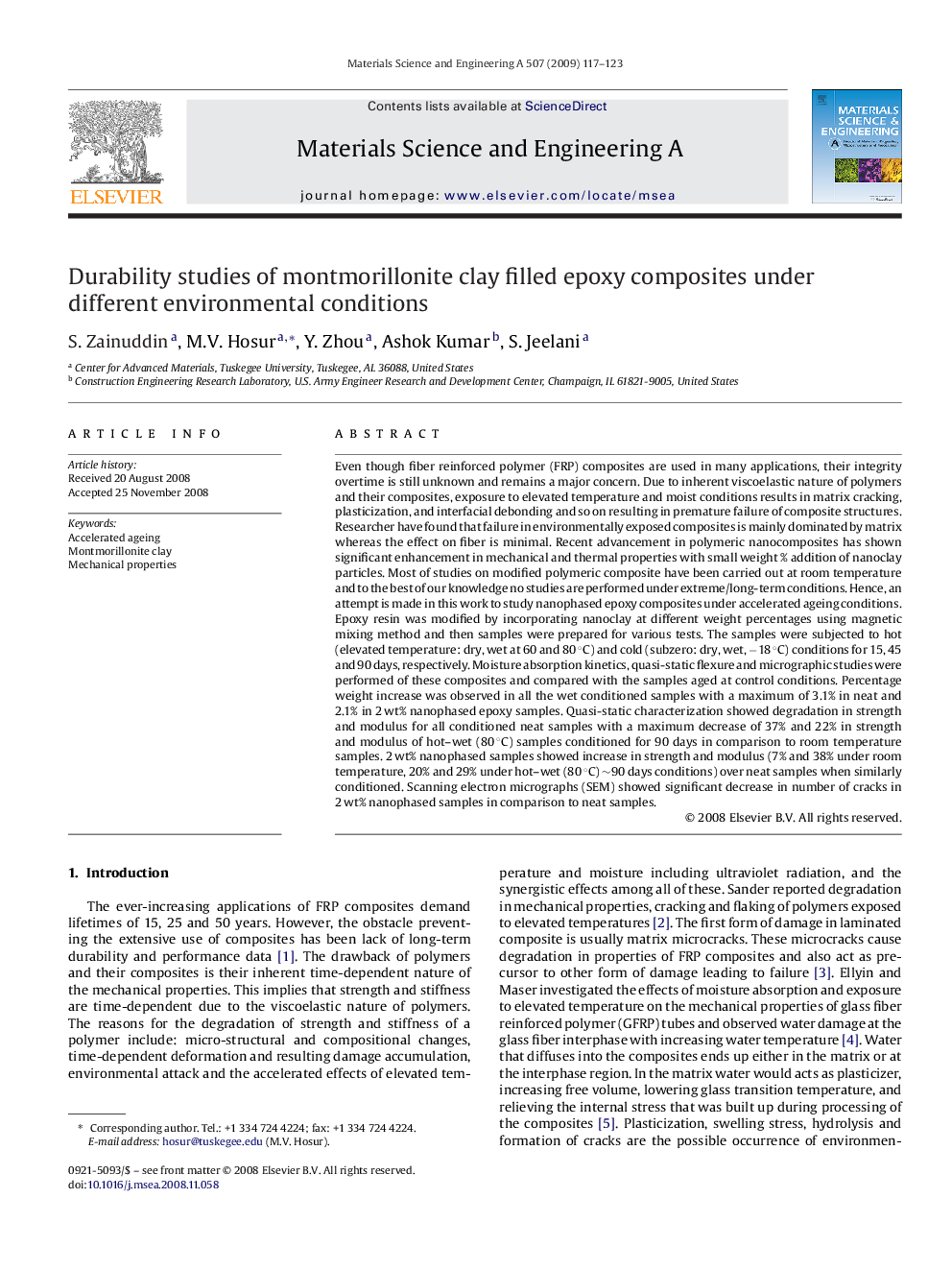| Article ID | Journal | Published Year | Pages | File Type |
|---|---|---|---|---|
| 1581061 | Materials Science and Engineering: A | 2009 | 7 Pages |
Even though fiber reinforced polymer (FRP) composites are used in many applications, their integrity overtime is still unknown and remains a major concern. Due to inherent viscoelastic nature of polymers and their composites, exposure to elevated temperature and moist conditions results in matrix cracking, plasticization, and interfacial debonding and so on resulting in premature failure of composite structures. Researcher have found that failure in environmentally exposed composites is mainly dominated by matrix whereas the effect on fiber is minimal. Recent advancement in polymeric nanocomposites has shown significant enhancement in mechanical and thermal properties with small weight % addition of nanoclay particles. Most of studies on modified polymeric composite have been carried out at room temperature and to the best of our knowledge no studies are performed under extreme/long-term conditions. Hence, an attempt is made in this work to study nanophased epoxy composites under accelerated ageing conditions. Epoxy resin was modified by incorporating nanoclay at different weight percentages using magnetic mixing method and then samples were prepared for various tests. The samples were subjected to hot (elevated temperature: dry, wet at 60 and 80 °C) and cold (subzero: dry, wet, −18 °C) conditions for 15, 45 and 90 days, respectively. Moisture absorption kinetics, quasi-static flexure and micrographic studies were performed of these composites and compared with the samples aged at control conditions. Percentage weight increase was observed in all the wet conditioned samples with a maximum of 3.1% in neat and 2.1% in 2 wt% nanophased epoxy samples. Quasi-static characterization showed degradation in strength and modulus for all conditioned neat samples with a maximum decrease of 37% and 22% in strength and modulus of hot–wet (80 °C) samples conditioned for 90 days in comparison to room temperature samples. 2 wt% nanophased samples showed increase in strength and modulus (7% and 38% under room temperature, 20% and 29% under hot–wet (80 °C) ∼90 days conditions) over neat samples when similarly conditioned. Scanning electron micrographs (SEM) showed significant decrease in number of cracks in 2 wt% nanophased samples in comparison to neat samples.
